Types of Asbestos: Understanding the Different Varieties
Last Updated on 5 July 2023
Asbestos Types: Unveiling the Hidden Threats
Asbestos is a term that strikes fear into the hearts of many, and for good reason. This mineral, once hailed as a miracle material due to its fire-resistant and insulating properties, has proven to be a silent killer. Exposure to asbestos fibres can lead to severe health issues, including lung cancer, mesothelioma, and asbestosis. The latency period between exposure and the manifestation of symptoms can be several decades, making early detection and prevention crucial. Therefore, In this comprehensive guide, we will delve into the various types of asbestos, their characteristics, and the dangers they pose. Undoubtedly, by understanding the different varieties, we can better protect ourselves and our loved ones from this hazardous substance.
Types of Asbestos: Exploring the Varied Forms
Chrysotile Asbestos: The Most Common of All The Types
Chrysotile asbestos, also known as white asbestos, is the most prevalent form found in buildings and products. It belongs to the serpentine mineral group and has curly, serpentine fibres, making them easier to spin into threads and weave into fabrics. It is usually white or light grey in appearance. This type of asbestos was commonly used in construction materials such as cement, roofing, and insulation due to its flexibility and heat resistance. It was also used in the production of brake pads. Chrysotile asbestos is less friable (easily crumbled) compared to other types, which can make it more challenging to detect and remove. Furthermore, prolonged exposure to chrysotile asbestos can lead to serious respiratory diseases.
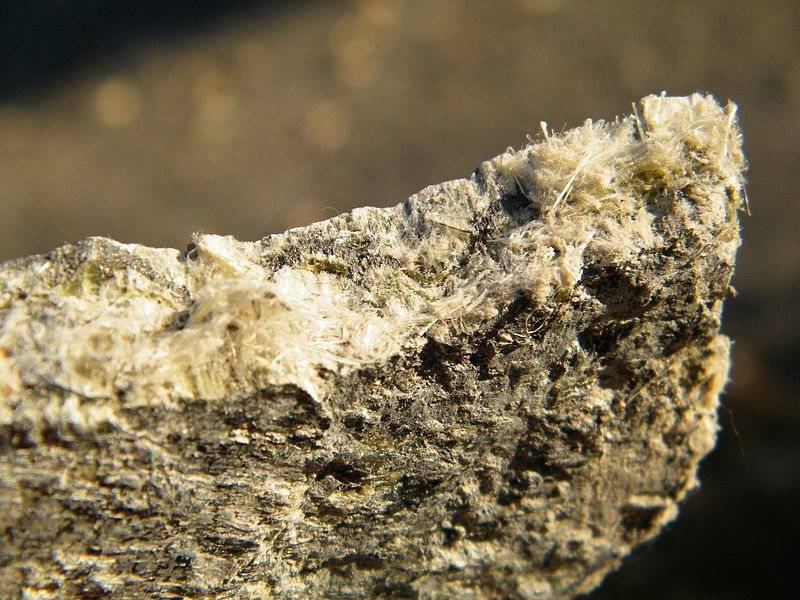
Chrysotile Asbestos
Amosite Asbestos: The ‘Brown’ Asbestos
Amosite asbestos, often referred to as brown asbestos because of its colour, is a member of the amphibole mineral group. It features straight, needle-like fibres that are more brittle than those of chrysotile asbestos. Amosite was widely used in insulation boards, ceiling tiles, and thermal insulation products. It is considered to be more friable than chrysotile, increasing the risk of fibre release if disturbed. Inhalation of amosite asbestos fibres can result in scarring of the lungs and increase the risk of developing lung cancer.
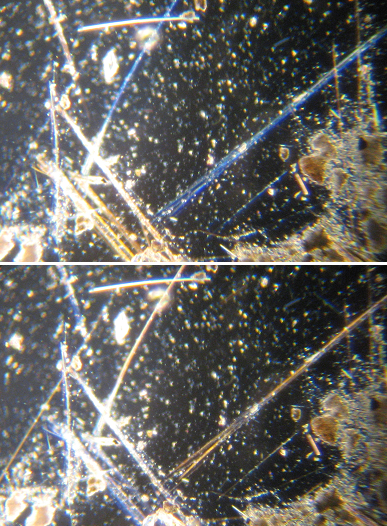
Amosite asbestos fibres stained and coloured
Crocidolite Asbestos: The ‘Blue’ Asbestos
Crocidolite asbestos, commonly known as blue asbestos, is another member of the amphibole group. It is characterised by its blue colour and extremely thin fibres. Due to its exceptional heat resistance, crocidolite was often utilised in steam engines, pipe insulation, and spray-on coatings. However, the inhalation of crocidolite asbestos fibres is particularly dangerous, as it has been linked to a high risk of developing mesothelioma. Due to its high friability and the dangerous nature of its fibres, crocidolite is considered the most hazardous form of asbestos.
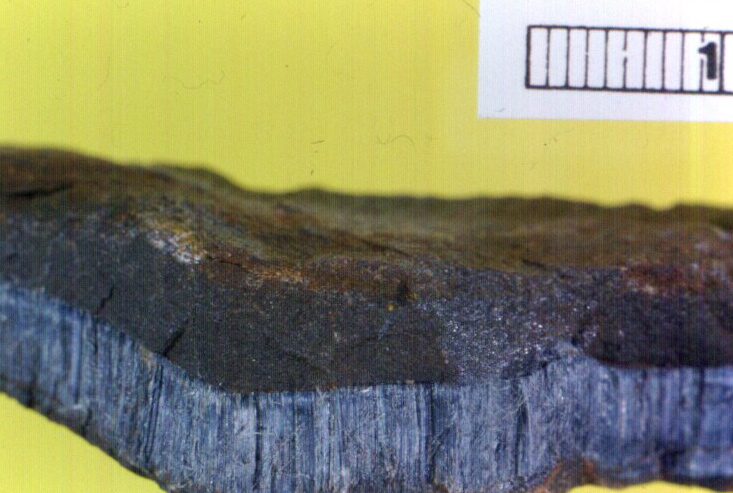
Crocidolite ‘blue’ asbestos
Tremolite Asbestos: A Hidden Danger
Tremolite asbestos is a type of asbestos mineral that belongs to the amphibole group. It is composed of elongated fibrous crystals and has a fibrous or columnar habit. It typically appears as a white, grey, or light green fibrous mineral. These colours can vary depending on impurities present in the asbestos sample.
Tremolite asbestos, although less commonly used, can contaminate other minerals such as talc, which is widely present in consumer products such as makeup.
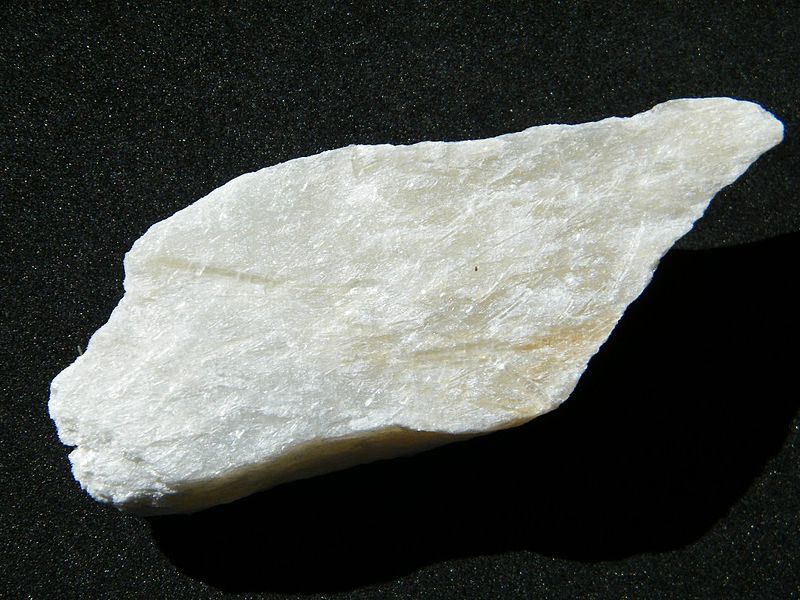
Tremolite asbestos
Actinolite Asbestos: A Less Prevalent Variant
Actinolite asbestos is another form of asbestos mineral that belongs to the amphibole group. It is a green, fibrous mineral that can occur in different forms, including long, thin fibres or as part of a larger asbestos mineral mixture.
Actinolite asbestos, often found alongside other minerals, carries similar health risks as other types of asbestos.
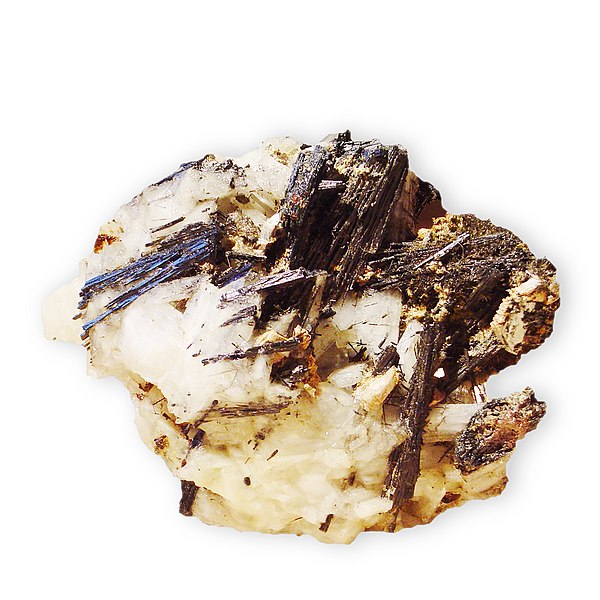
Actinolite asbestos
Anthophyllite Asbestos: The Lesser-Known of All The Types
Anthophyllite asbestos is a type of asbestos mineral that belongs to the amphibole group. Similar to other forms of asbestos, anthophyllite asbestos consists of long, thin fibres that can easily become airborne when disturbed, posing a health risk if inhaled. It is usually greyish-green to brown in colour and has a brittle, needle-like appearance.
Anthophyllite asbestos, the least common type among the asbestos group, has been utilised in limited industrial applications.
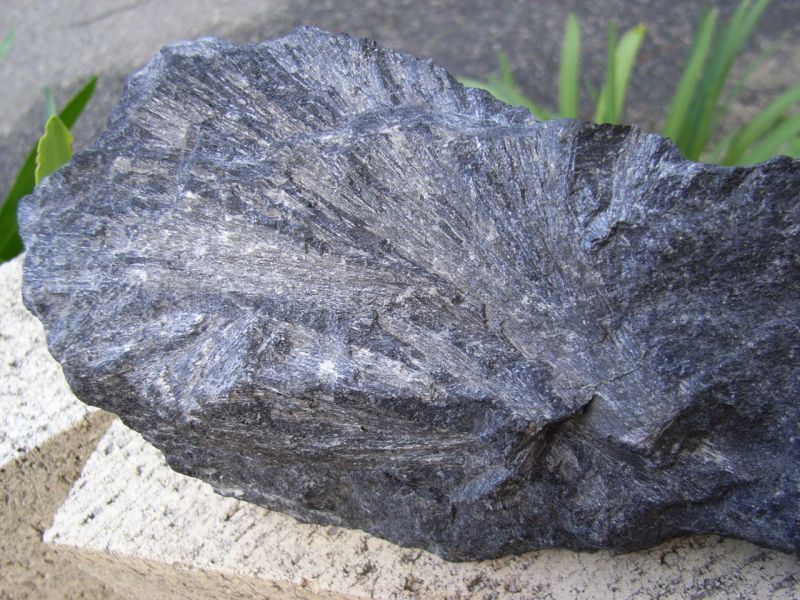
Anthophyllite in Komatiite
Final Note – While not as extensively used as Chrysotile, Amosite, or Crocidolite, Tremolite, Actinolite and Anthophyllite forms can still pose a health risk if disturbed and their fibres become airborne.
Asbestos Regulations and Guidelines
In order to protect individuals from asbestos exposure, various regulations and guidelines have been implemented in many countries. These include strict regulations on the use, handling, and removal of asbestos-containing materials. Particularly, the aim is to minimise the release of asbestos fibres into the environment and ensure the safety of workers and the general public.
Here in the UK, the regulatory authority responsible for enforcing asbestos regulations is the Health and Safety Executive (HSE). The HSE also provide guidance and monitor compliance with the regulations.
Here is a brief summary of the asbestos regulations in the UK:-
Control of Asbestos Regulations 2012
These regulations are the primary legislation governing asbestos in the UK. They outline the responsibilities of duty holders, such as employers and building owners, to manage asbestos-containing materials (ACMs) in non-domestic premises.
Duty to Manage Asbestos
The regulations require duty holders to identify the presence of asbestos in their premises or have an asbestos survey conducted. Additionally, they must create and maintain an asbestos register, assess the risk, and prepare a management plan to prevent or minimise asbestos exposure.
Asbestos Survey
An asbestos survey helps identify the location, type, and condition of asbestos-containing materials within a building. Above all, It determines the level of risk and guides the appropriate management actions.
Asbestos Licensing
The regulations stipulate that work with high-risk asbestos, such as asbestos insulation or asbestos coating, must be carried out by a licensed contractor. Therefore, licensing ensures that contractors have the necessary skills and expertise to handle asbestos safely.
Asbestos Awareness Training
Employers must provide asbestos awareness training to employees who may encounter asbestos during their work activities. Consequently, this training raises awareness about the presence of asbestos, its dangers, and precautionary measures to minimise exposure.
Duty to Inform
Duty holders must inform anyone who may come into contact with asbestos about its presence, location, and condition. This includes contractors, maintenance workers, and others who may work on or disturb asbestos-containing materials.
Asbestos Removal and Disposal
If asbestos needs to be removed, it must be done by a licensed contractor following strict guidelines. In addition, asbestos waste must be properly packaged, labeled, and disposed of at authorised waste disposal sites. Disturbing asbestos-containing materials can release fibres into the air, posing a significant risk of inhalation. Therefore, asbestos removal should be carried out in a controlled manner, using specialised equipment and personal protective gear.
Asbestos-Free Alternatives
In recent years, efforts have been made to develop safer alternatives to asbestos. These alternatives provide similar properties without the associated health risks. Materials such as fibreglass, cellulose, and mineral wool are commonly used as substitutes for asbestos in insulation, fireproofing, and other applications.
FAQs About Types of Asbestos
What are the main types of asbestos?
The main types of asbestos are chrysotile (white asbestos), amosite (brown asbestos), and crocidolite (blue asbestos).
What are the most common asbestos-related diseases?
The most common asbestos-related diseases include mesothelioma, lung cancer, and asbestosis.
Which of all the types of asbestos is the most dangerous?
All types of asbestos are hazardous, but crocidolite (blue asbestos) has been linked to a higher risk of developing mesothelioma.
Where can asbestos be found?
Asbestos can be found in a variety of building materials, including insulation, roofing, and ceiling tiles.
How can I protect myself from asbestos exposure?
It is crucial to hire professionals for asbestos testing and removal. Avoid disturbing asbestos-containing materials and wear appropriate protective gear when working in potentially contaminated areas.
Can I identify asbestos visually?
Visual identification of asbestos is challenging, as it often appears similar to other non-asbestos fibres. As a result, laboratory analysis is usually required for accurate identification.
Is there a safe level of asbestos exposure?
No level of asbestos exposure is considered safe. Even minimal exposure to asbestos fibres over time can lead to serious health problems.
Conclusion: Understanding Different Types of Asbestos
In conclusion, understanding the different types of asbestos is crucial for protecting ourselves and those around us. Whether it is chrysotile, amosite, crocidolite, or the lesser-known forms like tremolite, actinolite, and anthophyllite, each variety poses a significant risk to our health. Therefore, by being aware of the presence of asbestos in our surroundings and taking necessary precautions, we can minimise the potential dangers associated with this hazardous mineral.
Remember, when it comes to asbestos, prevention is always better than a cure. Stay informed, stay safe!
Need asbestos advice?
If you need any help or advice at all with any aspect of asbestos then we’ll be very happy to assist you. Give us a call and our experts will give you some advice and guidance on whatever if is you’re concerned about.
Please contact us on 0800 141 2676, email us at info@rbasbestos.co.uk or fill in the form below.
Our professional asbestos surveyors conduct asbestos inspections and asbestos surveys every day across the UK on all types of properties, both residential and commercial, for private home owners and commercial property Managers and owners. So when it comes to managing asbestos in your property, you’re in very safe hands with RB Asbestos Consultants.

